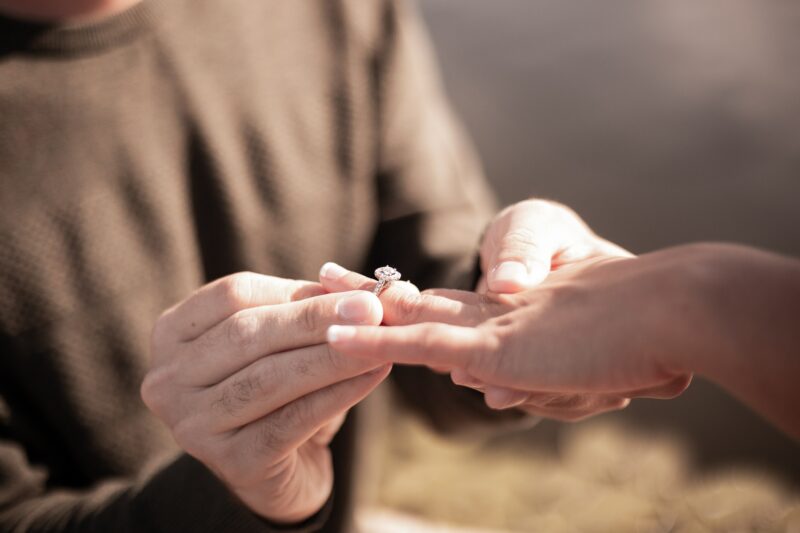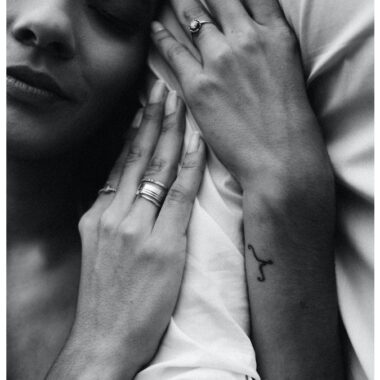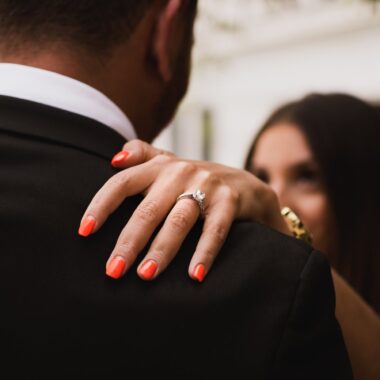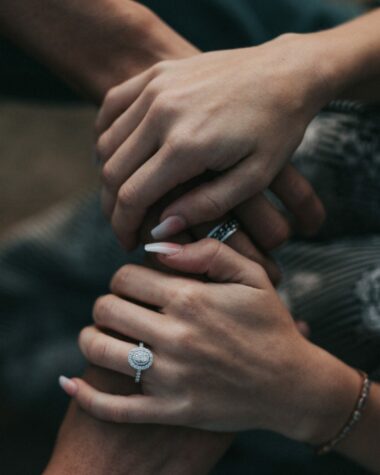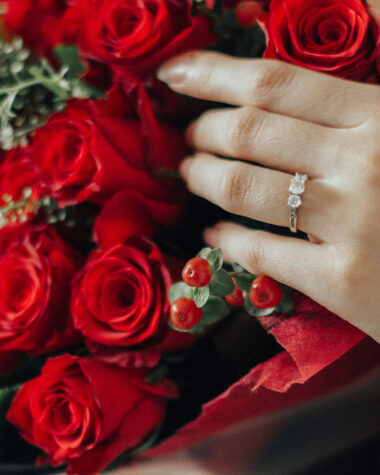A marriage proposal initiates a magical period: your engagement. But did you know that there are a few etiquette rules concerning the proposal and engagement that have been in force for decades? We’ve interviewed etiquette specialist Peter Depoorter to get you the scoop on how to follow the etiquette rules for your engagement and proposal.
Engagements: then and now
Before delving into the current etiquette rules surrounding engagements, Peter would like to give a bit of background history:
“In the past, ‘asking a lady to marry you’ was not seen as a favourable event. When the marriage was consummated, the parents of the bride had to live without their daughter’s help in the household, on the farm or in the business. They saw their daughter as a piece of ‘property’. In some cases, the groom was even paid to maintain the bride’s standard of living. Fortunately, times have changed, and today, an engagement is considered a seal of unconditional love between two people!”
Etiquette rules before the engagement proposal
Before you ask one of the most important questions of your life, there are some things according to engagement etiquette that you need to remember. Peter explains:
“According to etiquette, it is an absolute must that the parents of your bride-to-be are the first to be informed of the proposal before the proposal actually takes place. One should ask the partner’s father for the hand of his son or daughter. This is a sign of respect.
Etiquette also provides some guidelines around the engagement ring. A stone is a must – a diamond is allowed but not required. In the past, such a jewel invariably cost two months’ wages. Fortunately, everyone now determines his or her own available budget. It is also best not to buy the ring together with your fiancé, otherwise, the surprise effect is lost. You can, however, sound out the parents or best friends of your future spouse’s personal taste.”
Etiquette rules during the engagement proposal
To kneel, or not to kneel? Some engagement etiquette rules also apply during the proposal:
“The well-known custom of getting down on one knee does stem from the etiquette rules. The knee drop reaction is the ultimate romantic gesture towards your beloved. In the past, when a man was knighted, he would get down on one knee to show respect to his king or queen. In religions, kneeling before God is an ultimate sign of respect, and so is kneeling during a proposal a sign of unconditional surrender to the partner. It does not matter whether this is done on the left or right knee.
Furthermore, a proposal is definitely an intimate, touching event. However, according to the rules of etiquette, it is not meant to be an emotional scene…. (winks). A tearful moment is allowed, but an open and attentive attitude from your beloved remains the norm. When the engagement ring is brought out, your future spouse may just help to put it on his or her left hand”, Peter indicates.
Engagement etiquette rules after the proposal
Yes! Your loved one has said yes! You’re floating on a pink love cloud, utterly devoted to your fiancé/e. But even at this stage of the engagement, some etiquette rules apply, according to Peter:
“After the ‘yes’ is said, the bride’s parents should be the first to be informed. This is followed by the groom’s parents, and finally, the rest of the family and the couple’s witnesses.
During the engagement party, it is forbidden for the invited ladies to wear white dresses, or at least not according to the etiquette rules. They might otherwise surpass the future bride in beauty. Also, pearls may not be worn as jewellery, as they symbolise tears…”
Do you have to follow engagement etiquette rules?
The above classic rules have faded as the years go by. But how important is it to follow them in this day and age?
“Etiquette” remains a stylish thing. Today, its real value lies in how you apply these rules. Keep your proposal and the announcement or celebration of your engagement respectful, both for both parents and for you as a future couple. Think something good, think something beautiful, think something sweet, then every future day will have something positive…”
About Peter Depoorter:
Peter Depoorter is a certified master of ceremonies and etiquette expert, especially in engagements, and was a senior teacher of this for many years at Syntra West-Vlaanderen.
